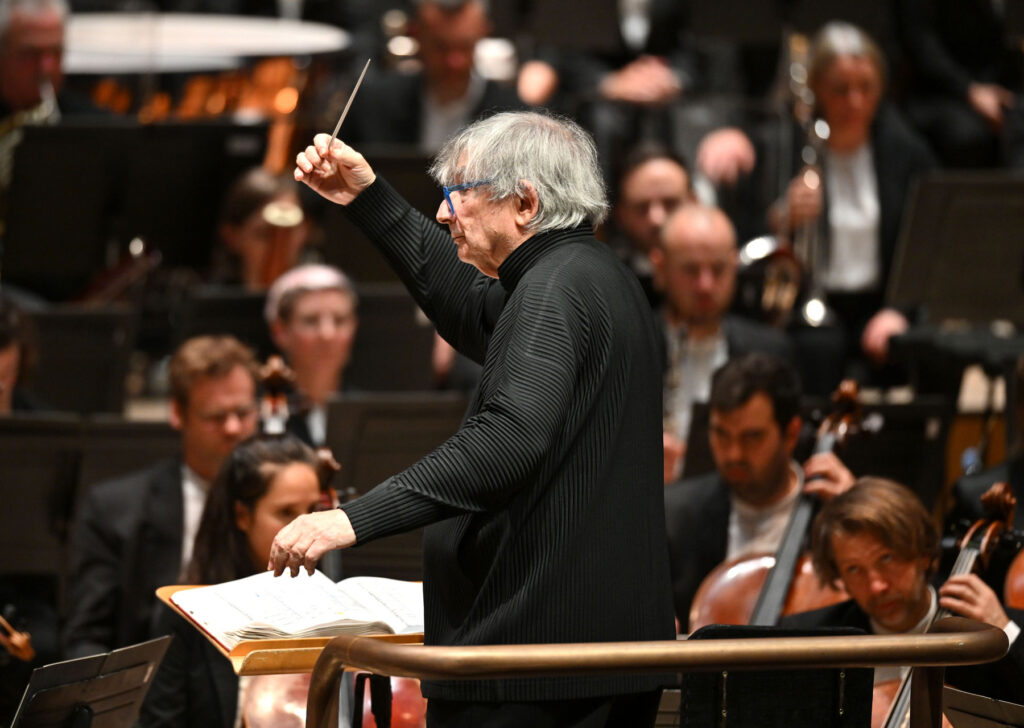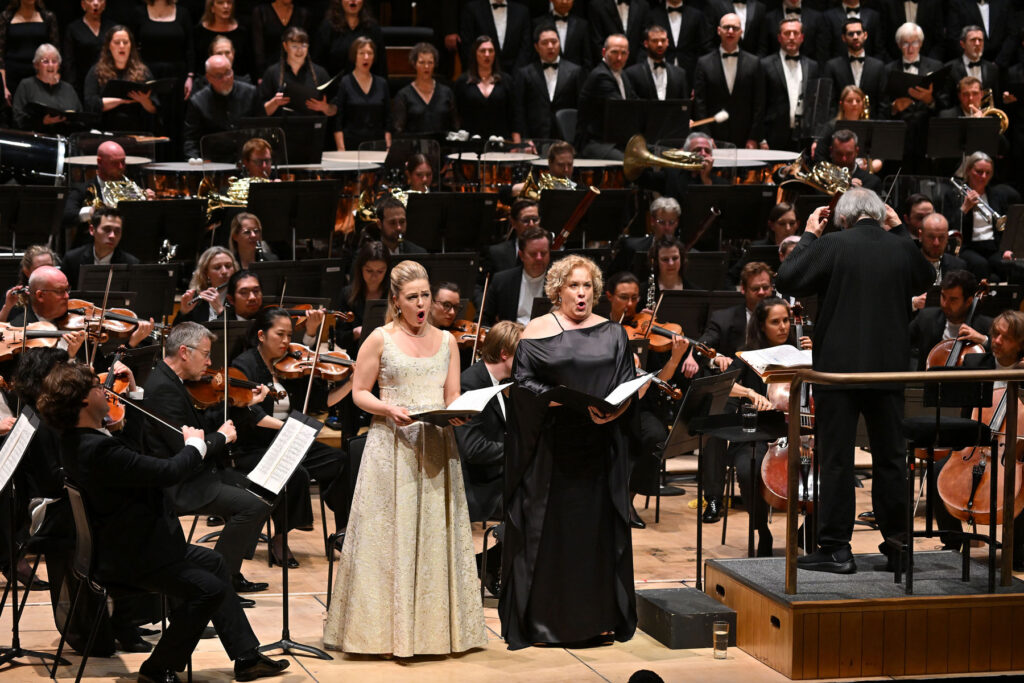Sometimes when you listen to performances of the great symphonies – and Mahler’s Second is one of the greatest – your mind turns to other things. This can often be because of the quality of what you are hearing, but equally it is because of something loftier. This was frequently the case with this performance of the ‘Resurrection’ by Michael Tilson Thomas and the London Symphony Orchestra. The Auferstehen may be a setting by Friedrich Klopstock, but Tilson Thomas had rather drawn me into a world of Dante and the sonnets of John Donne before we ever got there. Rarely has a performance of this work made me travel so far from the music into the grimness, terror and darkness elsewhere only to emerge with an overwhelming sense of triumph over adversity.
This was never going to be quicksilver Mahler – although if we got agitation it had nothing to do with fast tempos, rather a degree of febrility in the playing. If the opening movement was measured – and powerful – Tilson Thomas was at least consistent. The second theme (sometimes a trap for Leonard Bernstein) was beautifully done, as serene and gorgeously phrased as one could have wished for it. But MTT knew exactly what he was doing here: the fluttering hands, the pointing towards a wind instrument, the sweeping of the baton to get the string tone he wanted. If this all seemed maximalist, one sometimes wondered how the indecisiveness of his conducting elsewhere could have obtained what we heard. The opening bars had been enormously weighty, but Tilson Thomas never gave a hint of that. As symmetrically powerful as the opening bars, the closing descending triplets were laden with heft. The odd luftpause aside, this movement had been massive and granitic – a juggernaut that was unrelenting in its funereal tread, and where darkness snuffed out any trace of light that flickered in the detail.

The second movement benefited from superlative playing, especially from the strings. The idea that this music is a memory, like a shaft of sunlight, rather felt like something else – it seemed like a composite of memories being played out against a sunset. It is music which is inspired by Austrian country Ländler, and yet here it seemed to dissolve into the embrace of two elderly lovers in their final dance. If the playing seemed charged with intensity it was because the phrasing was so rich in colour and range. Its spell was broken (with no pause) by a thundering timpani stroke to open the Scherzo. Weighty playing, if not always in tempo, added to the grotesque horror in this movement.
I often think the choice of a soprano and a mezzo for this symphony should probably reflect the conductor’s vision of the work and in this sense they may have fallen a little short, at least for the soprano. Alice Coote’s mezzo in Urlicht was often gorgeously sung although she proved to be lighter than the wave of orchestral colour that Tilson Thomas gave her. A slightly darker lower register – although Coote lacked nothing for security here – would have probably melded better with the orchestra; on the other hand, her high E flat on the final appoggiatura was a moment of perfect equilibrium. Did it lack an element of solemnity – perhaps; but was it in any way discordant with the longer view of serenity that MTT was taking here, then no. That arc of transcendence often came through in the sublime violin solo of Benjamin Gilmore, however.
The vast final movement returned us to the enormous power of the first. It would, I think, have been easy for a lesser conductor to have simply gone for volume at the expense of detail – but here we got both. The harps rode above the orchestra as if on chariots; horn calls had the ring of echoes to them. The timpani (one of the triumphs of this performance) evoked genuine terror: the sticks came down like hammers on an anvil and there was absolutely nothing irresolute about the effect Tilson Thomas wanted us to hear. When Mahler writes kräftig in the score this is what MTT gave us. Tempi may have been measured, but never did this movement lack the surge it needed.

The off-stage bands were wonderfully done – more cavernous – and from the cloisters – in the Barbican than one would experience in many other concert halls, but effective nonetheless. If the playing here was superb, that was sometimes offset by some intonation weaknesses in the orchestral brass. The first entry of the chorus – on a magical ppp – was perfectly controlled but the “O Glaube” solos for soprano and mezzo felt underwhelming. If Siobhan Stagg had an angelic touch to her tone, she also sounded slightly overawed. She spun some of the silkiest notes; the thread, however, was too thin and one perhaps craved just a little more volume to match the magenta tones of Alice Coote.
The Auferstehen itself (a superb LSO chorus) was extremely fine. Embroidered with precise dynamics, and clear diction, this never sounded impatient – rather, it glowed like fire, the rage for redemption entirely at one with Tilson Thomas’s closing view of this symphony. Apotheosis here was never to be rushed into; rather, it was to be met with inevitable fate – but with absolution and personal peace in a final conclusion.
In many respects this had been an utterly unique ‘Resurrection’. More powerful and thunderous than many I have heard in recent years the irony was it was also among the most beautiful and poetic too. It could sometimes feel like a performance struggling with anger as well as peace, and the conflict between the two – only for that to be resolved at the very end. Shakespeare’s King Lear came to mind: If the outer movements suggested a conductor on the brink of rage, then the Andante felt like recollections in tranquillity, and a willingness to embrace advancing age. Although this was a public performance, what MTT gave us felt like a very private and personal one – and because of this it was particularly special.
Marc Bridle
Gustav Mahler, Symphony No.2 ‘Resurrection’
Siobhan Stagg (soprano); Alice Coote (mezzo-soprano); London Symphony Chorus; London Symphony Orchestra; Michael Tilson Thomas (conductor)
Barbican, London, 20 October 2024
All photos by Mark Allan.